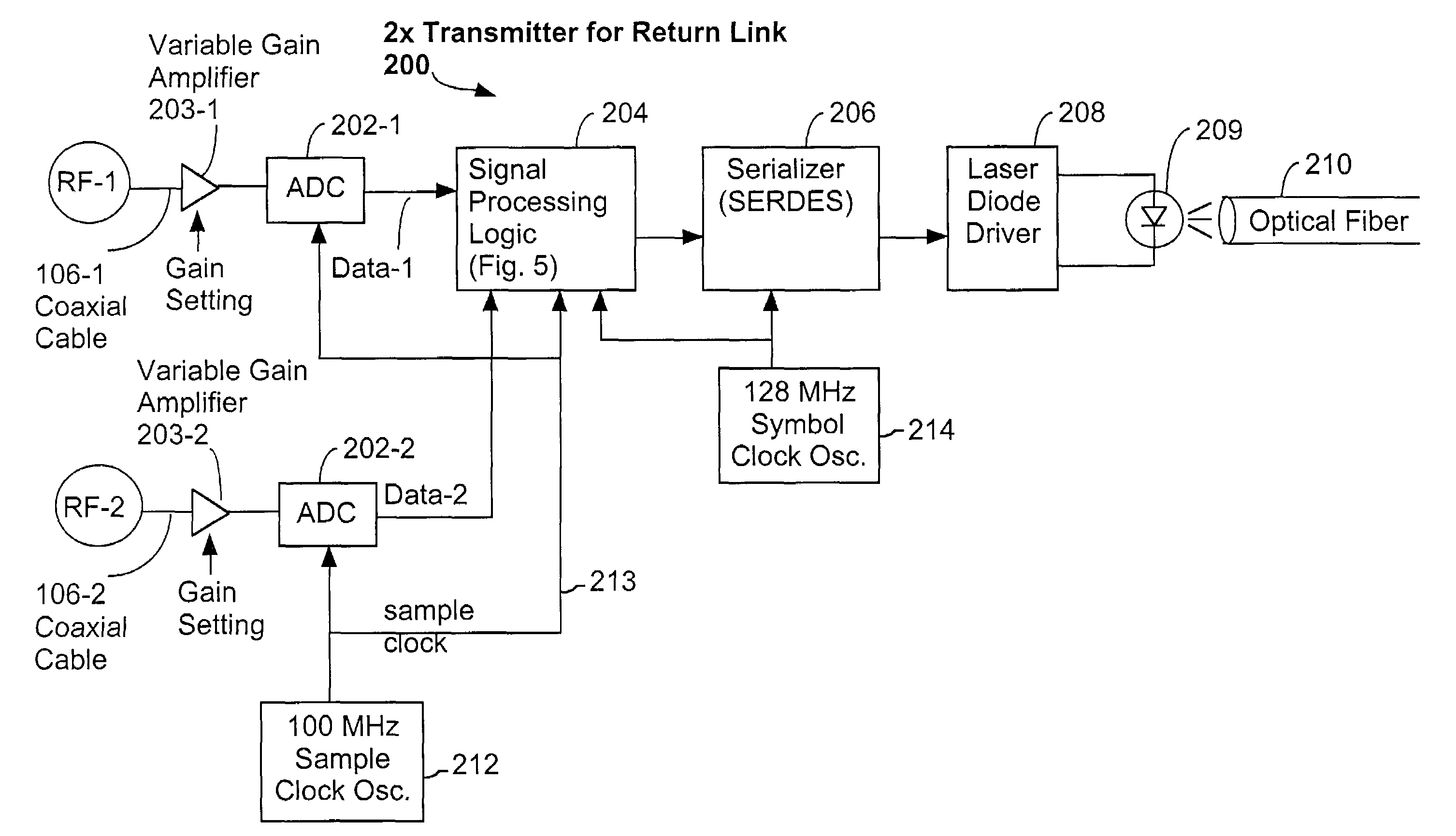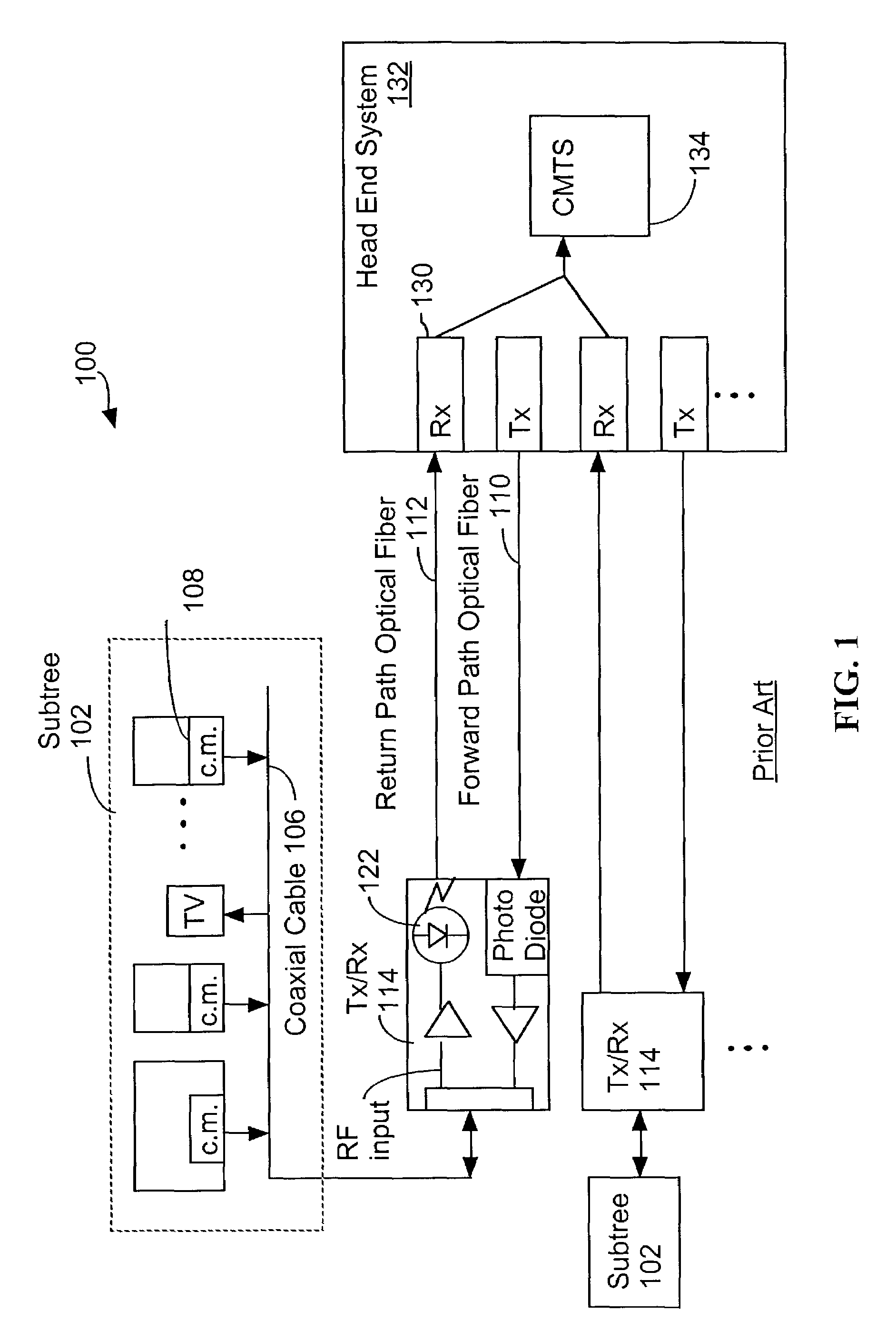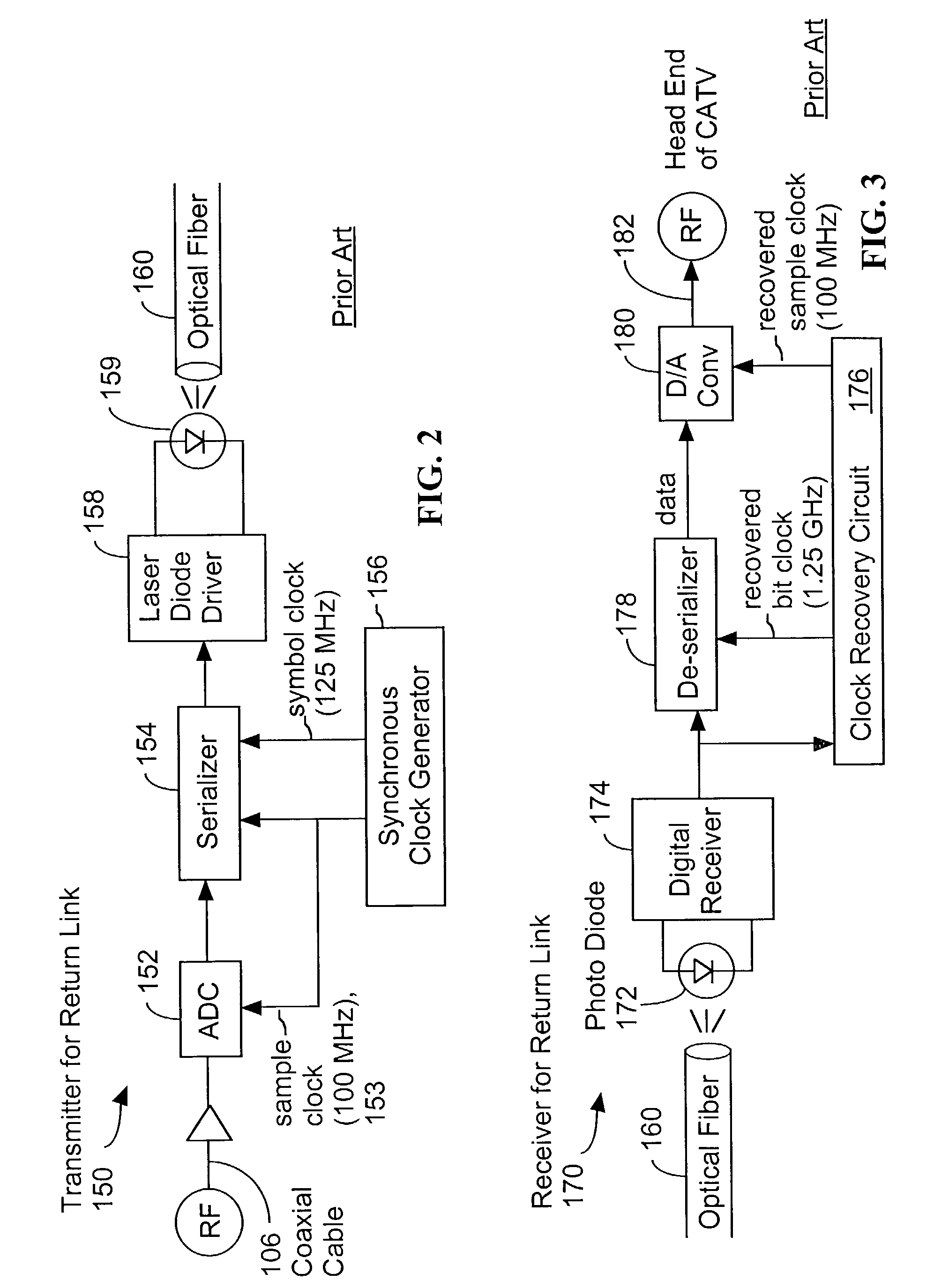System and method for transmitting data on return path of a cable television system
a return path and cable television technology, applied in the field of upstream data communication, can solve the problems of inability to take information back from subscribers, the equipment is so expensive that it cannot be cost justified today, and the ingress path signals need to be aggregated, so as to avoid or substantially reduce the aggregation, ingress and/or link degradation related problems, and the effect of efficient use of optical fiber links
- Summary
- Abstract
- Description
- Claims
- Application Information
AI Technical Summary
Benefits of technology
Problems solved by technology
Method used
Image
Examples
Embodiment Construction
Return Path Dual RF Signal Transmitter
[0054]Referring to FIG. 4, there is shown a preferred embodiment of a dual RF channel transmitter 200 of a digital return path link of the present invention. In particular, the transmitter 200 is preferably configured to receive two radio frequency (RF) signals from two separate coaxial cables 106-1, 106-2. Each RF signal is processed by a variable gain amplifier 203-1, 203-2 and digitized by a pair of analog to digital converters (ADC) 202-1, 202-2. As will be discussed in more detail below, in some embodiments of the present invention the gain of each variable gain amplifier 203 is controlled via commands received from the head end of the system. These commands are received by a control logic circuit 227 (shown in FIG. 5) which uses the commands to set the gain of the amplifiers 203, as well as to set the mode of other components of the transmitter 200.
[0055]It should be understood by the reader that all clock rates, data structures and the li...
PUM
 Login to View More
Login to View More Abstract
Description
Claims
Application Information
 Login to View More
Login to View More - R&D
- Intellectual Property
- Life Sciences
- Materials
- Tech Scout
- Unparalleled Data Quality
- Higher Quality Content
- 60% Fewer Hallucinations
Browse by: Latest US Patents, China's latest patents, Technical Efficacy Thesaurus, Application Domain, Technology Topic, Popular Technical Reports.
© 2025 PatSnap. All rights reserved.Legal|Privacy policy|Modern Slavery Act Transparency Statement|Sitemap|About US| Contact US: help@patsnap.com



